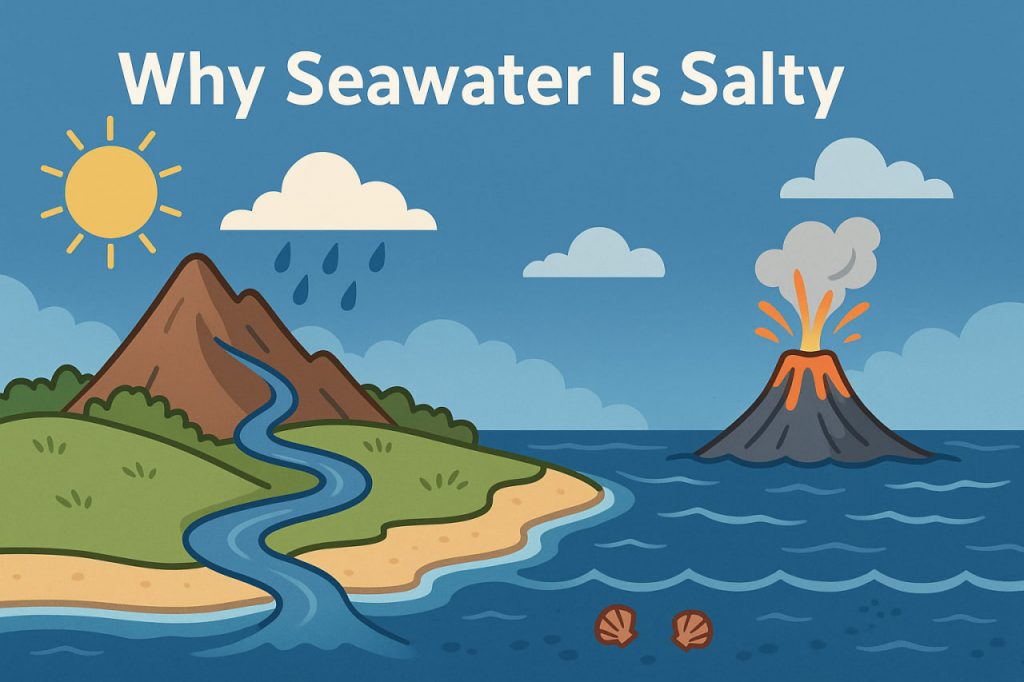When we taste seawater, its saltiness is unmistakable. But have you ever wondered why the ocean is salty while rivers and lakes usually are not? The salt in the sea didn’t appear overnight—it’s the result of millions of years of natural processes that involve Earth’s rocks, rain, rivers, and geological activity.
Where Does the Salt Come From?
The salt in seawater primarily comes from two main sources:
- Erosion of rocks on land
Rainwater is slightly acidic and, over time, breaks down rocks. This process releases minerals, especially sodium and chloride ions (which form common salt), into rivers and streams. - Underwater volcanic activity and hydrothermal vents
Seafloor volcanoes and vents release dissolved minerals and gases from inside the Earth into the ocean. These also add salt and other elements to the water.
These processes have been happening for billions of years, and because oceans don’t have outlets like rivers, the minerals accumulate and concentrate—making the sea salty.
Why Don’t Lakes and Rivers Taste Salty?
Although rivers carry dissolved salts, they flow into oceans, where the salts stay behind. In contrast, lakes often drain into rivers or evaporate without salt buildup—unless they’re closed systems, like the Dead Sea, which are very salty due to trapped minerals and constant evaporation.
What’s in Sea Salt?
Seawater contains about 3.5% salt by weight, but it’s more than just table salt (sodium chloride). It also includes:
- Magnesium
- Calcium
- Potassium
- Sulfates
- Carbonates
These minerals play vital roles in marine life, helping regulate body functions in fish, crustaceans, and plants.
Does Salinity Vary Across the Ocean?
Yes. Some areas are saltier than others:
- High salinity: Found in warm, dry regions where water evaporates quickly (like the Red Sea).
- Low salinity: Found near melting ice or where rivers pour freshwater into the ocean (like the Arctic Ocean).
- The average salinity is around 35 parts per thousand.
Changes in salinity can affect ocean currents, climate patterns, and marine ecosystems.
Is Ocean Salt Renewable?
The salt cycle is part of Earth’s natural systems. Rain continues to erode rocks, rivers deliver minerals, and the ocean continues to receive and distribute them. While the amount of salt changes slowly, it’s constantly being cycled through Earth’s water system.
Glossary
- Erosion – The breakdown of rocks into smaller particles by wind, water, or chemicals
- Ions – Electrically charged particles, like sodium or chloride
- Hydrothermal vents – Openings in the seafloor that release hot, mineral-rich water
- Salinity – The measure of how much salt is in water
- Evaporation – The process of liquid turning into vapor


